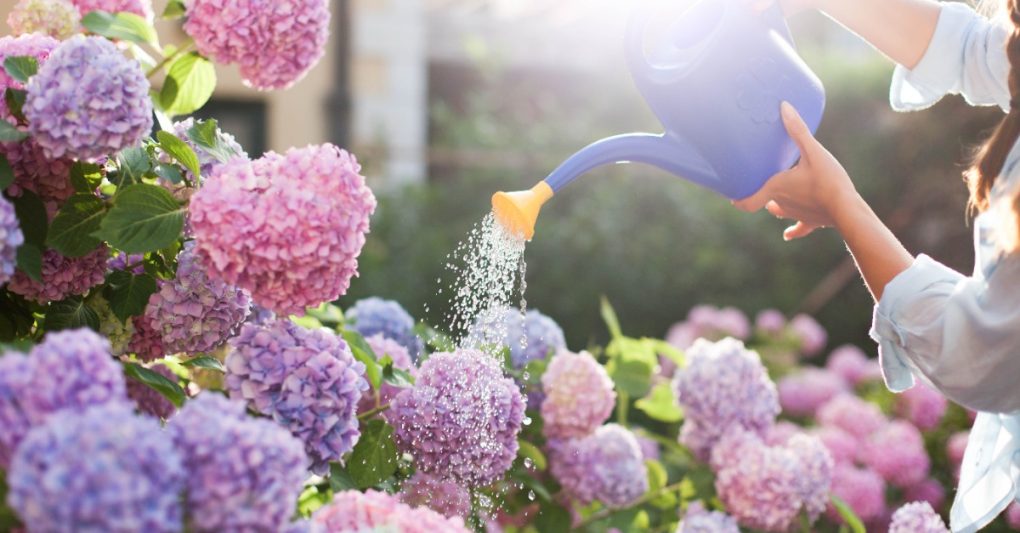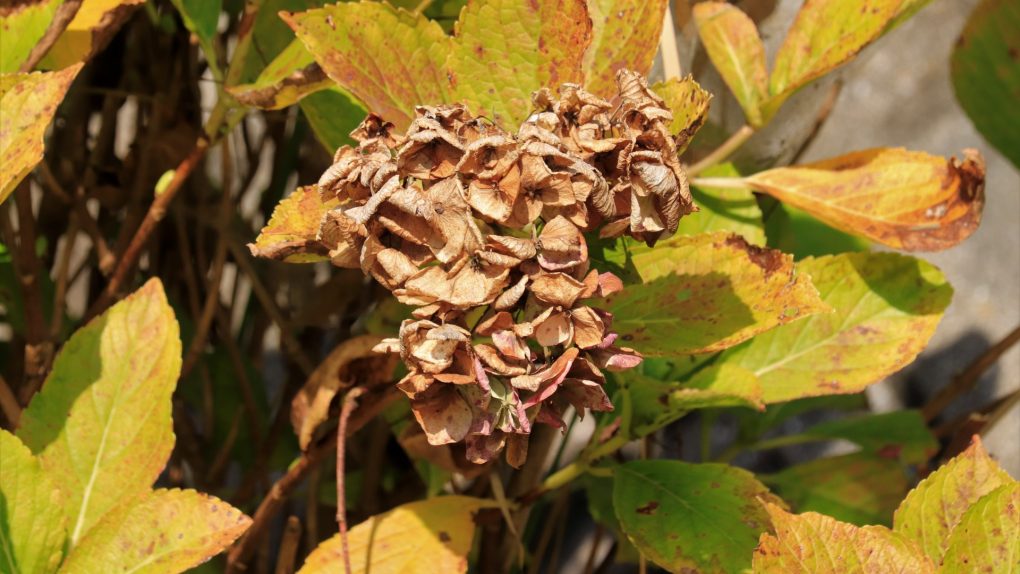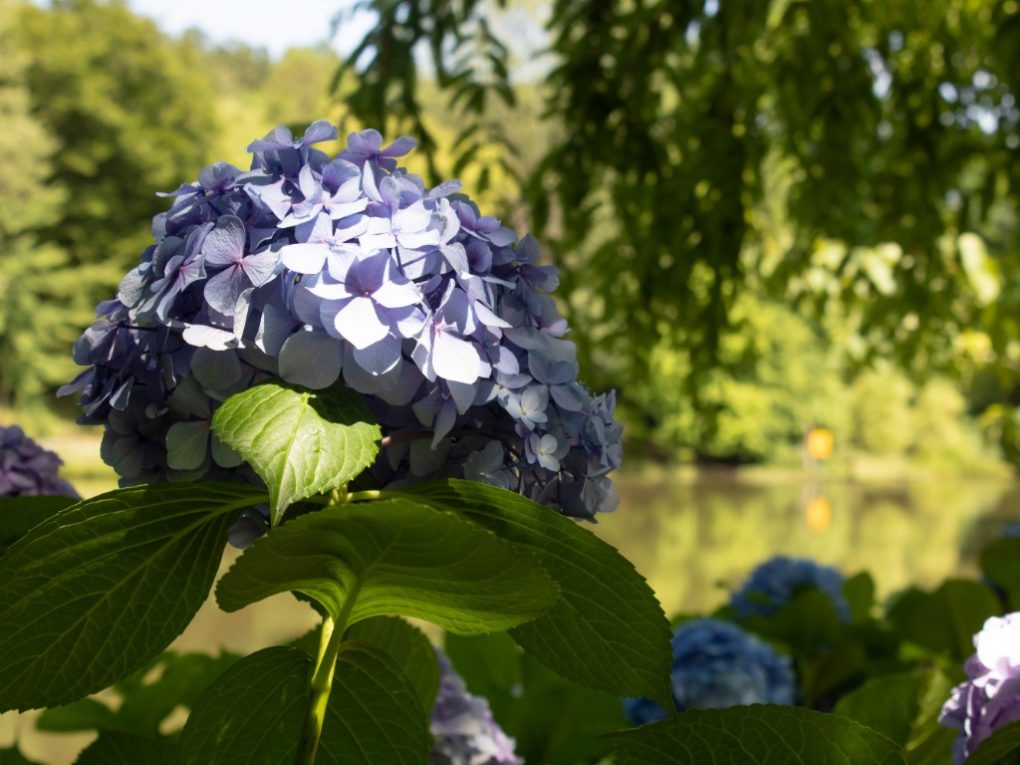How to Prevent Hydrangea Wilting: Tips and Tricks
It is essential to ensure proper hydration and maintain optimal growing conditions to prevent hydrangea wilting. Hydrangeas are prone to wilting due to their large blooms and shallow root systems, which can lead to inadequate water uptake.

Water hydrangeas consistently and deeply to moisten the soil, avoiding overwatering and underwatering. Applying a layer of mulch around the base helps retain moisture while preventing weeds. Additionally, provide partial shade in the afternoon to protect hydrangeas from heat stress. Regularly prune dead or damaged branches to promote new growth, reduce the chances of fungal infections, and decrease wilting. Keep an eye on the weather conditions and make the necessary adjustments to maintain a healthy environment for your hydrangea.
Table of Contents
Understanding Hydrangea Wilting
Hydrangeas are beautiful flowering plants that can add color and texture to any garden. However, they are prone to wilting, which can frustrate gardeners. Understanding the causes and symptoms of hydrangea wilting can help prevent this problem.
Causes of Hydrangea Wilting
There are several reasons why hydrangeas may wilt:
- Lack of water: Hydrangeas require a lot of water to thrive. Their leaves and flowers can wilt if they don’t receive enough water.
- Incorrect watering: Overwatering or underwatering can cause hydrangeas to wilt, and watering them correctly is important.
- Heat stress: Hydrangeas are sensitive to heat and can wilt if they get too much sun or temperatures too high.
- Disease: Certain diseases, such as root rot or powdery mildew, can cause hydrangeas to wilt.
Symptoms of Hydrangea Wilting
The symptoms of hydrangea wilting can vary depending on the cause:
- Leaves drooping: One of the most common symptoms of hydrangea wilting is drooping leaves, which may also turn yellow or brown.
- Flowers wilting: If the flowers are wilting, it’s a sign that the plant is not getting enough water or is experiencing heat stress.
- Stems drooping: If the stems are drooping, it’s a sign that the plant is not getting enough water.

Understanding the causes and symptoms of hydrangea wilting can help prevent this problem. For example, gardeners should water their hydrangeas correctly, provide enough shade during hot weather, and watch out for signs of disease.
Preventive Measures for Hydrangea Wilting
Hydrangeas are beautiful flowering plants that require proper care and maintenance to prevent wilting. Here are some preventive measures that can help keep hydrangeas healthy and vibrant.
Proper Watering Techniques
Hydrangeas require consistent watering to prevent wilting. Overwatering or underwatering can cause stress to the plant and lead to wilting. To prevent this, hydrangeas should be watered deeply but infrequently. The soil should be moist but not waterlogged. It is also important to water the hydrangeas at the base of the plant to avoid getting water on the leaves and flowers, which can cause fungal diseases.
Soil Management
Hydrangeas prefer well-draining soil that is rich in organic matter. The soil pH should be between 5.2 and 6.0 for blue hydrangeas and 6.0 and 6.2 for pink hydrangeas. Adding compost or organic matter to the soil can help improve soil quality and drainage. It is also important to avoid compacting the soil around the hydrangeas, as this can restrict root growth and lead to wilting.
Fertilization
Proper fertilization can help prevent wilting in hydrangeas. A fertilizer balanced with nitrogen, phosphorus, and potassium can promote healthy growth and prevent stress. Fertilizer should be applied in the spring and fall, following the manufacturer’s instructions. Overfertilization can lead to salt buildup in the soil, which can cause wilting.
Sunlight and Temperature Control
Hydrangeas prefer partial shade to full sun, depending on the variety. Too much sun can cause wilting, while too little can lead to weak growth and poor flowering. Protecting hydrangeas from extreme temperatures is also important, as both hot and cold weather can cause stress and wilting.

Pruning Techniques
Proper pruning can help prevent wilting in hydrangeas. Dead or damaged branches should be removed in the spring, and the plant should be pruned to maintain its shape and size. It is also important to avoid pruning too much, as this can lead to stress and wilting.
By following these preventive measures, gardeners can help prevent wilting in hydrangeas and enjoy their beautiful blooms all season.
Common Mistakes to Avoid
When it comes to growing hydrangeas, gardeners make several common mistakes that can lead to wilting. Here are some things to avoid:
Improper Watering
One of the biggest mistakes gardeners make with hydrangeas is improper watering. Overwatering can lead to root rot, while underwatering can cause wilting. Finding the right balance and watering your hydrangeas when the soil is dry is essential. A general rule of thumb is to water deeply once a week, which can vary depending on your climate and soil type.
Lack of Sunlight
Hydrangeas need sunlight to thrive, but too much direct sunlight can cause wilting. If your hydrangeas are in a spot that gets too much sun, consider moving them to a shadier location. On the other hand, if your hydrangeas are not getting enough sunlight, they may not bloom or wilt. So ensure they get at least six hours of sunlight a day.
Poor Soil Quality
Hydrangeas prefer well-draining soil that is rich in organic matter. If soil is too heavy or sandy, it can lead to wilting. Therefore, it’s essential to test and amend your soil to provide the right nutrients and drainage for your hydrangeas.
Improper Pruning
Pruning is essential for maintaining the health and shape of your hydrangeas. However, improper pruning can lead to wilting. It’s important to know when and how to prune your hydrangeas correctly. Some varieties bloom on old wood, while others bloom on new wood. Pruning at the wrong time can lead to a lack of blooms or wilting.
Pests and Diseases
Hydrangeas are susceptible to pests and diseases, which can cause wilting. Common pests include aphids, spider mites, and scale insects. Diseases such as powdery mildew and root rot can also cause wilting. It’s essential to monitor your hydrangeas for signs of pests and diseases and take action promptly if you notice any issues.
Avoiding these common mistakes can help prevent wilting and keep your hydrangeas healthy and beautiful.
